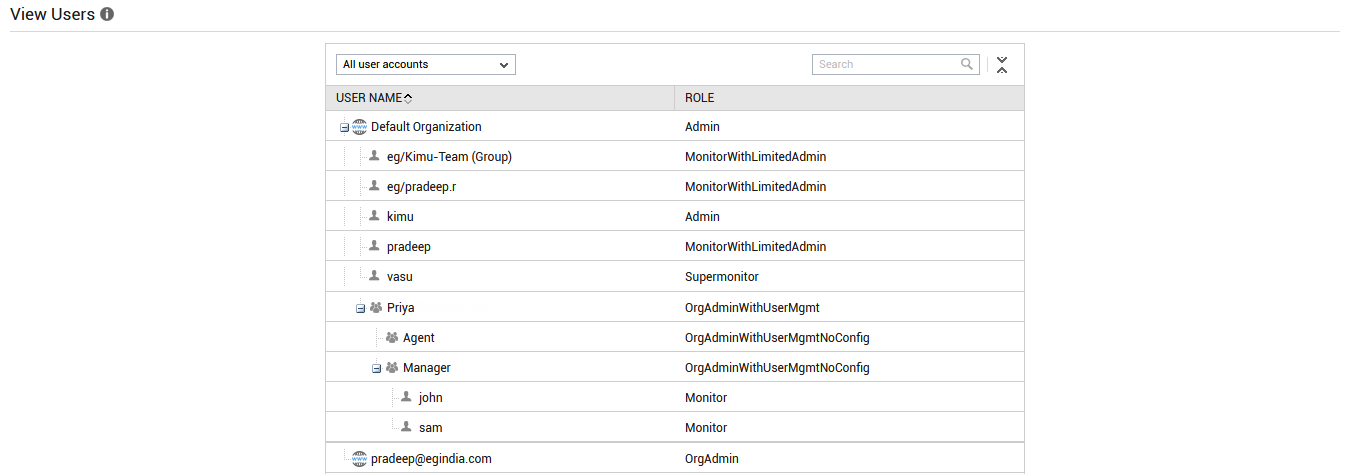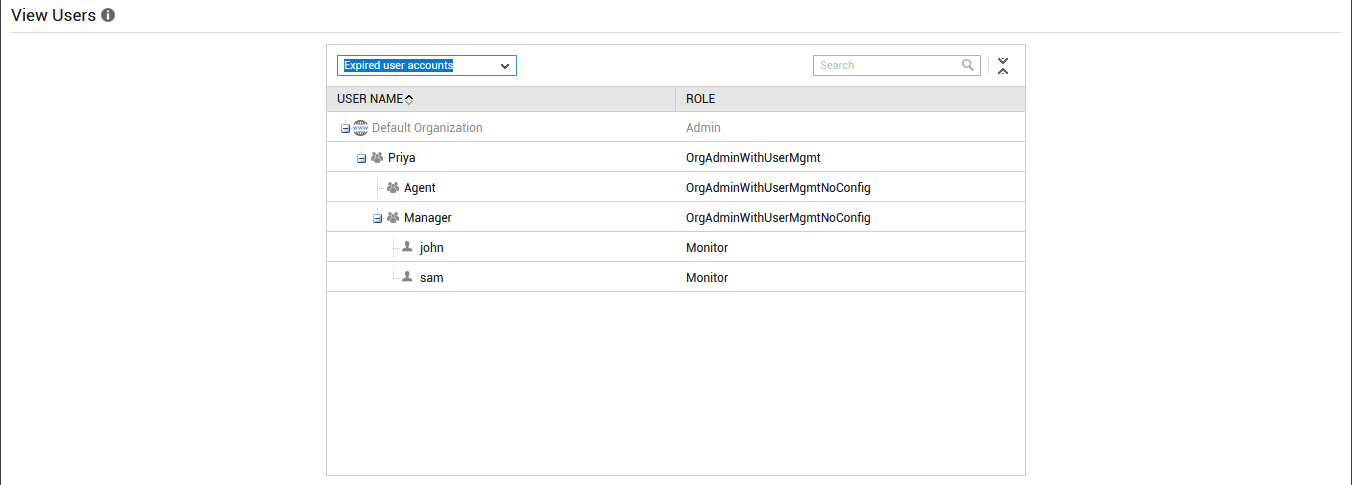Viewing Users
In large enterprises characterized with hundreds of users, each user will be provided with their own roles and responsibilities. By default, each user of eG Enterprise is assigned a user role. This user role defines the rights and responsibilities that each user logging into eG Enterprise has. In environments where hundreds of users log into the eG Enterprise system, IT administrators may have clearly demarcated the roles for those users. To obtain a service level overview of which user possesses which role along with the hierarchy of the user in their enterprise, administrators can use the View Users page that appears upon navigating through the menu sequence: User Management - > User -> View.
By default, the All user accounts option will be chosen from the list box available in this page listing all the users and their demarcated roles in the target environment. This page will list all the users based on the hierarchy of the users i.e., users are represented as per the Organization / Organizational unit / Independent users in the target environment based on the deployment model of eG Enterprise (see Figure 1).

Figure 1 : The View Users page
Choosing the Active user accounts option from the list box will list all the users that who are currently active in the target infrastructure.

Figure 2 : Viewing the active users
Choosing the Expired user accounts option from the list box will list all the users whose subscriptions have already expired. This list will help administrators to quickly identify those users whose subscriptions had expired and remove them from the eG Enterprise system.

Figure 3 : Viewing the users whose subscriptions have expired
If hundreds of users are listed in this page, then administrators may have to scroll this page endlessly to figure out the user of their choice. To avoid this, a Search text box has been provided in this page. Specifying the whole/partial name of the user will list the users as well as the Organization / Organizational unit to which the user belongs to.
By default, this page will display all the users in the target infrastructure. If you wish to view only the Organizations / Organizational units created in the target environment, then, you can click the Collapse all button available near the Search text box.
